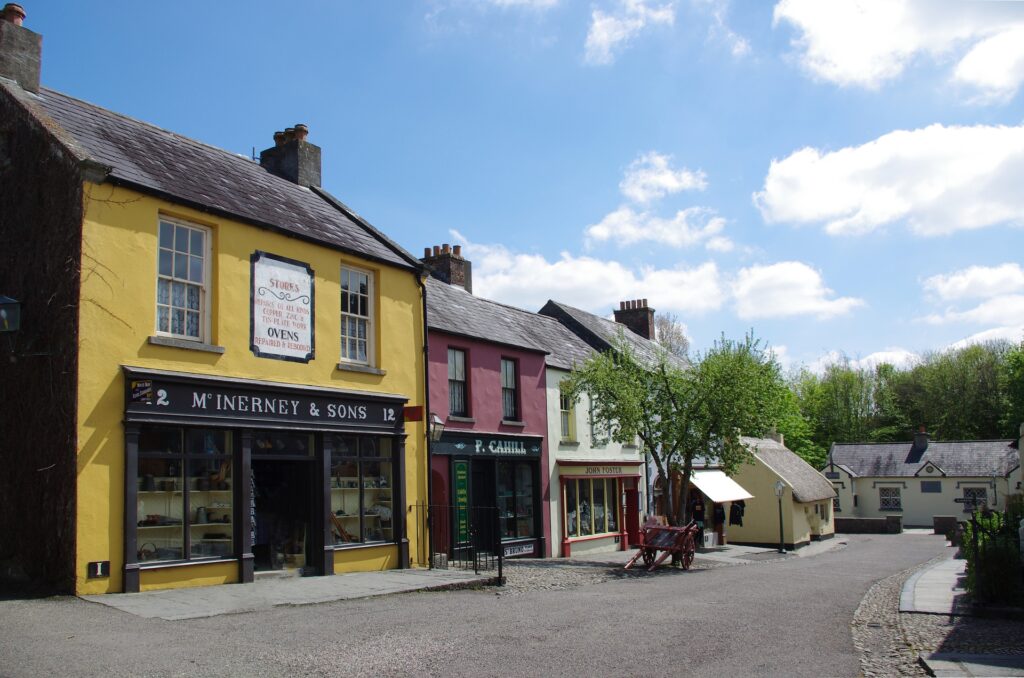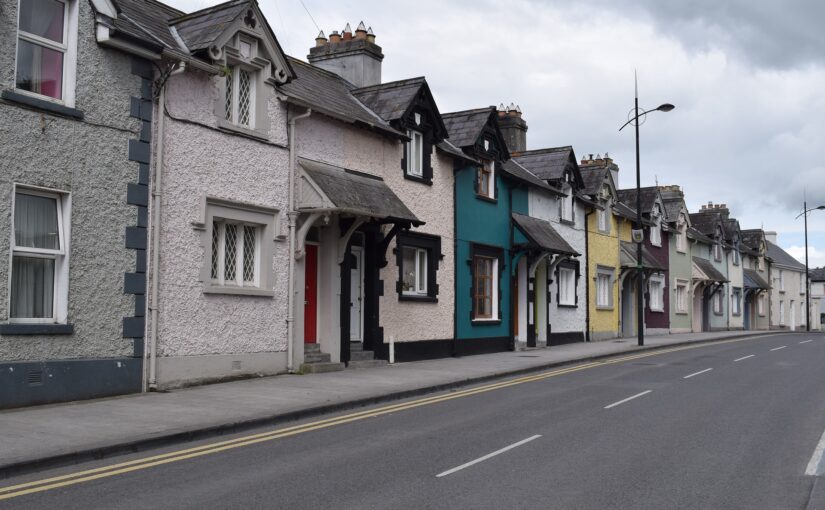Irish housing estates are just lovely. Lots of green, space, cute houses and windy roads where kids are playing. They look like a perfect little village – the best place to raise a family with all modern comfort available. They are remarkable examples in many ways.
Most of these housing estates that fit this description are developed during the Celtic Tiger period. The “Celtic Tiger” is a term for the very successful Irish economy that emerged during the 1990s and reached its peak in 2000. Ireland made a remarkable transformation from a country of poverty to one of prosperity before the world economic crisis.
Remarkable design of Irish Housing Estates
It is outstanding that the Irish housing estates are designed in a way to promote safety, comfort and general wellbeing. This is achieved by introducing lots of curvy roads in the estates and have only one way in and out, avoiding fast traffic or having a lot of cars that would just pass through.
The houses are designed to the general liking – friendly and homy looking rather than modern. There are rules to implement public greens in the estate as well as dedicating a certain percentage of houses to an affordable living program. Like this also less fortunate families are integrated in the neighbourhood. By doing so, they are avoiding the development of poor neighbourhoods somewhere else that would come with a number of social problems attached.
The Celtic Tiger and the Real Estate Bubble

When Ireland’s growth began to slow down in 2007, there were many warnings that it would not be able to avoid the impending global recession.
In 2008, Ireland was hit by a severe financial crisis as its property market collapsed due to over-speculation and over-development. This is leading to a substantial rise in unemployment rates and substantial falls in wages.
Simply explained, the property bubble started due to a real estate shortage. That’s why many property developments were initiated, that lead to shortage of workers. As more workers were needed, many foreigners came to Ireland to work, who also needed housing… Slowly but surely this was blowing up the bubble.
As a result of the 2008 crisis, high unemployment rates lead to people leaving the country or in case of foreign workers, they would return to their home country. Therefore, no more housing was needed and Ireland was left with a situation of over-development.
How the Irish Government dealt with the Property Bubble
Successfully addressing the housing and property market in Ireland has been a major challenge. That’s why NAMA comes to play.
NAMA is the National Asset Management Agency of Ireland. Set up in 2009, they take on some of the burden of loans from Irish banks. They try to address the financial crisis that Ireland experienced in 2008. The main role of NAMA was to take on some of the burden of bad loans from Irish banks. Also, they try to address the financial crisis that Ireland experienced in 2008.
NAMA purchases assets from financial institutions for cash or bonds, aiming to reduce lending risks for banks and other financial institutions.
We Can Learn From The Irish Housing Estates
We can learn a lot of lessons from the Irish abandoned housing estates. It is important to keep in mind that these developments are still wonderful homes where people live. They will do so for decades to come.
What happened to the Irish housing estates is a good example to study further when it comes to urban planning decisions.
Main image by candelabra on Pixabay
